Resources
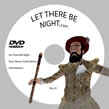 www.glpaweb.org/zencart5/index.php?main_page=product_info&cPath=2&products_id=29
www.glpaweb.org/zencart5/index.php?main_page=product_info&cPath=2&products_id=29
The Let
There Be Night DVDs, which feature two DVD discs of resources that support dark
skies, are now available at cost from the GLPA
Online Store. See www.LetThereBeNight.com/dvd.htm
for more details about the DVDs.
 http://www.darkskiesawareness.org/
http://www.darkskiesawareness.org/
Dark Skies Awareness is a Cornerstone Project of the 2009 International Year of
Astronomy. Lots of events are happening globally throughout the year that
advocate for dark skies.
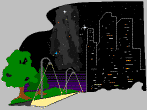 http://www.darksky.org/
http://www.darksky.org/
The International Dark-Sky Association (IDA) thoroughly
addresses lighting issues. This preeminent site for resources serves
policymakers, educators, lighting engineers, and all dark sky
advocates. See the International
Dark-Sky Association (IDA) for its model lighting ordinance (MLO), a list of
suitable light manufacturers, information sheets, and a large collection of
other resources.
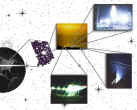 http://icole.home.att.net/
http://icole.home.att.net/
The Indiana Council on Outdoor Lighting Education (ICOLE)
publication entitled Outdoor Lighting Practices in the State of Indiana
outlines "opportunities to save millions of dollars, reduce nuisance,
improve safety, protect the environment, and preserve our natural heritage,
through the effective use of outdoor lighting." The ICOLE
website has many useful links that address lighting issues, including
regulations and ordinances that are emerging across the country.
 http://www.springer.com/sgw/cda/frontpage/0,11855,1-10100-72-36486016-0,00.html
http://www.springer.com/sgw/cda/frontpage/0,11855,1-10100-72-36486016-0,00.html
Light Pollution Handbook, by Kohei Narisada
and Duco Schreuder, 2004, 943 p., ISBN: 1-4020-2665-X
"Constituting the first holistic overview including practical remedies,
this handbook provides the background needed by anyone grappling with the
complex issue of outdoor lighting and its effects," per the publisher.
See Chuck Bueter's Review of Light Pollution Handbook
at review.htm.
 http://www.astrosociety.org/education/publications/tnl/74/74.html
http://www.astrosociety.org/education/publications/tnl/74/74.html
A Silent Cry for Dark Skies from the Universe in the Classroom series
(No. 74-Winter 2008) presents examples of how the natural world is impacted by
excessive outdoor lights. See also Light Pollution – Universe in
the Classroom No. 44, Fall 1998, at
http://www.astrosociety.org/education/publications/tnl/44/lightpoll.html
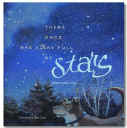 http://www.bobcrelin.com/author.html
http://www.bobcrelin.com/author.html
There Once Was a Sky Full of Stars, a children's book by Bob Crelin,
"offers hope and encouragement by describing simple things we can all do to
help bring back the stars." Available from Sky
Publishing.
http://www.unihedron.com/projects/darksky/
Hand-held Sky Quality Meter (SQM) from Unihedron quantifies sky glow in
magnitudes per arc-second squared. See also sqm.htm.
http://groups.yahoo.com/group/OutdoorLighting-Forum/
The OutdoorLighting-Forum is "an open exchange about
outdoor lighting's design and use as it impacts upon modern life and degrades
our connection to the night sky. The largest uncensored and most
active forum on light pollution."
 Projects
and Activities
Projects
and ActivitiesEducational activities for students and families support dark sky efforts.
 http://www.inquinamentoluminoso.it/dmsp/index.html
http://www.inquinamentoluminoso.it/dmsp/index.html
The Night Sky in the World describes surveying and mapping of night sky with
satellites; maps the effects of the light pollution on the night sky; predicts
future effects of light pollution on the night sky; and maps the entire sky of
individual sites.
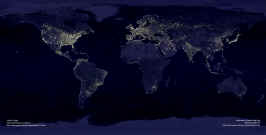 http://antwrp.gsfc.nasa.gov/apod/ap001127.html
http://antwrp.gsfc.nasa.gov/apod/ap001127.html
The earth seen at night shows vast amounts of wasted lighting lost to space.
 http://www2.nature.nps.gov/air/lightscapes/
http://www2.nature.nps.gov/air/lightscapes/
"National Parks hold some of the last remaining harbors of darkness and
provide an excellent opportunity for the public to experience this disappearing
resource... Natural lightscapes, including dark night skies, are an integral
component of countless park experiences."
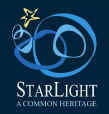 http://www.starlight2007.net/
http://www.starlight2007.net/
Coalition of international agencies announces Declaration
in Defence of the Night Sky and the Right to Starlight.
 http://www.twan.org
http://www.twan.org
The World at Night features "a collection of stunning
photographs and time-lapse videos of the world’s most beautiful and historic
sites against the nighttime backdrop of stars, planets and celestial events."
 http://www.flap.org/
http://www.flap.org/
Fatal Light Awareness Program seeks to lessen the bird kills from poor outdoor
lighting during bird migration.
 http://science.nasa.gov/headlines/y2001/ast01nov_1.htm
http://science.nasa.gov/headlines/y2001/ast01nov_1.htm
NASA news article and streaming audio introduces light pollution.
 http://selene-ny.org
http://selene-ny.org
The Sensible and Efficient Lighting to Enhance the Nighttime Environment (SELENE)
mission is "to advocate better lighting practices in New York State
and to ensure the passage of the The Healthy, Safe, and Energy Efficient Outdoor
Lighting Act."
 http://en.wikipedia.org/wiki/Light_pollution
http://en.wikipedia.org/wiki/Light_pollution
Wikipedia, The Free Encyclopedia addresses light pollution issues.
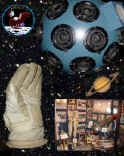
The PHM Planetarium & Air/Space Museum in Mishawaka, IN, is a
regional hub for public astronomy programs. Families regularly gather to
witness celestial highlights throughout the year. Growing light pollution
impairs the viewing of the fainter night sky features that these families now
enjoy.
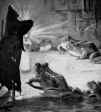 http://www.urbanwildlands.org/Resources/LongcoreRich2004.pdf
http://www.urbanwildlands.org/Resources/LongcoreRich2004.pdf
Paper addresses subtle ecological consequences of night lighting.
 http://darkskycamping.googlepages.com/
http://darkskycamping.googlepages.com/
Best practices in illumination for the Boy Scouts; dark sky camping and the
impact of light pollution on scout camps.
 http://www.trianglealumni.org/mcrol/nps.html
http://www.trianglealumni.org/mcrol/nps.html
National Park Service Class 1 Federal Areas - 1997 Study; shows the impact of
light pollution on National Parks.
 www.darkskysociety.org
www.darkskysociety.org
The Dark Sky Society offers guidelines, diagrams, and other resources to abate
light pollution.
 www.lrc.rpi.edu/programs/NLPIP/lightinganswers/lightpollution/abstract.asp
www.lrc.rpi.edu/programs/NLPIP/lightinganswers/lightpollution/abstract.asp
The Lighting Research Center (LRC) offers light pollution Questions & Answers,
including clarification and utility of terms such as "full cut-off"
and "fully shielded."
 http://www.wickedelicate.com/thecitydark.html
http://www.wickedelicate.com/thecitydark.html
The City Dark film explores the practical and philosophical effects of
light pollution as it follows an urban youth on his first trip out of the city
to see the stars.
 http://www.newyorker.com/reporting/2007/08/20/070820fa_fact_owen
http://www.newyorker.com/reporting/2007/08/20/070820fa_fact_owen
The New Yorker magazine article sums up lighting issues in engaging
article by David Owen.
 http://www.candle-night.org/english/
http://www.candle-night.org/english/
Candle Night, an initiative from Japan, encourages everyone to "turn off
the lights, and take it slow" on the equinoxes and solstice.
 chain
chain
Energy chain illustrates
how only about 1% of initial energy makes it from generator to roadway
reflection.
| * | * | * |
| * | * | * |
| * | * | * |
magnitudes.htm
Illustrations convey the meaning of "magnitudes per square arcsecond."